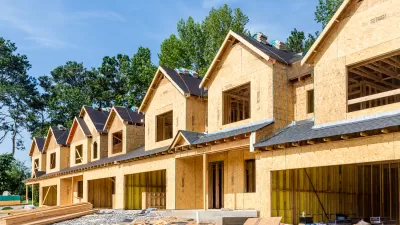Environmentalists are pushing the nuclear industry to do more to prepare for sea level rise. An estimated 13 nuclear plants in the U.S. are considered vulnerable now or in the future.

Christina Nunez writes of a threat to 13 nuclear power plants located in the United States—rising sea levels as a result of climate change. Nunez opens the story by citing the example of two reactors located off Florida's Biscayne Bay at the Turkey Point nuclear plant. The plant is licensed to operate until 2032. "At some point after that, if you believe the direst government projections, a good part of the low-lying site could be underwater," writes Nunez.
Nunez notes that the 2011disaster at Japan's Fukushima Daiichi nuclear plant shifted the debate about nuclear—especially with regard to sea level rise. Nunez cites the example of a pair of reactors in the United Kingdom that were "taken offline in 2013 because of concerns that an extreme event could overwhelm its seawall, which was then improved."
In the United States, the nuclear power industry is in the process of reevaluating its flood risks, producing a "strategy it calls FLEX, where key backup equipment is stationed at multiple locations so it can be shuttled to a distressed plant."
Given the 13 nuclear sites considered at risk, all located along the Atlantic and Gulf coasts, some believe that not enough is being done. "In the past, historical data about storms and flooding would inform the licensing requirements for a unit," explains Nunez, but sea level rise will render such historical data obsolete. Researchers have flagged four plants—in New Jersey, New Hampshire, and Connecticut—as particularly vulnerable.
The article includes more information on safety considerations at soon-to-be-decommissioned plants (such as Turkey Point, mentioned above) as well as ongoing rule-making processes that could implement additional safety regulations at nuclear plants.
FULL STORY: As Sea Levels Rise, Are Coastal Nuclear Plants Ready?

Pennsylvania Mall Conversion Bill Passes House
If passed, the bill would promote the adaptive reuse of defunct commercial buildings.

Planning for Accessibility: Proximity is More Important than Mobility
Accessibility-based planning minimizes the distance that people must travel to reach desired services and activities. Measured this way, increased density can provide more total benefits than increased speeds.

Fair Housing Cannot Take a Back Seat to ‘Build, Baby, Build’
If we overlook fair housing principles in the plan to build US housing back better, we risk ending up right back where we started.

LA Metro Board Approves New 710 Freeway Plan
The newest plan for the 710 corridor claims it will not displace any residents.

Austin’s Proposed EV Charging Rules Regulate Station Locations, Size
City planners say the new rules would ensure an efficient distribution of charging infrastructure across the city and prevent an overconcentration in residential areas.

Making California State Parks More Climate-Resilient
A recently released report offers recommendations for keeping state parks healthy and robust, including acquiring additional land for conservation and recreation.
City of Costa Mesa
Licking County
Barrett Planning Group LLC
HUD's Office of Policy Development and Research
Mpact Transit + Community
HUD's Office of Policy Development and Research
Tufts University, Department of Urban and Environmental Policy & Planning
City of Universal City TX
ULI Northwest Arkansas
Urban Design for Planners 1: Software Tools
This six-course series explores essential urban design concepts using open source software and equips planners with the tools they need to participate fully in the urban design process.
Planning for Universal Design
Learn the tools for implementing Universal Design in planning regulations.

























